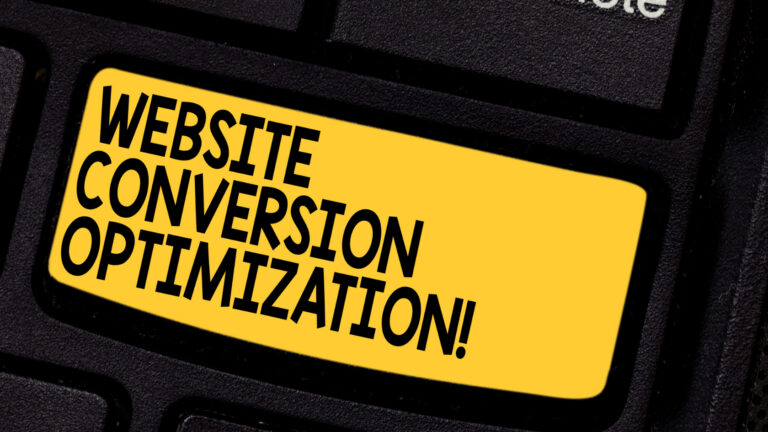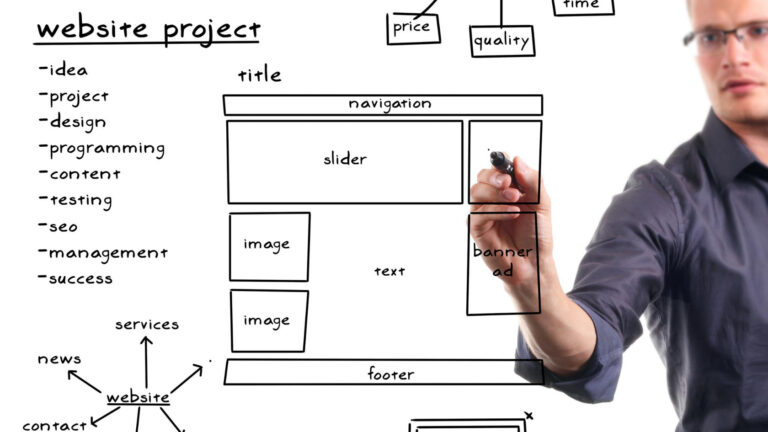
If you want to boost your landing page user experience (UX), here’s a surprising fact:
88% of online consumers are less likely to return to a site after a bad experience.
Don’t let that happen to you. By making a few key improvements, you can elevate your landing page and keep visitors engaged.
From clear headlines to mobile-friendly design, this article will show you how to create a user-centric experience that keeps your audience coming back for more.
Key Takeaways
- Clear and concise headlines and subheadings capture attention and guide users.
- Streamlined navigation and intuitive user interface enhance engagement and satisfaction.
- Attention should be given to the psychology of color and placement of call-to-action buttons.
- Mobile-friendly design and speed optimization are essential for a seamless experience and improved user engagement.
Clear and Concise Headlines
One key improvement to enhance your landing page UX is to use clear and concise headlines.
Attention-grabbing headlines play a crucial role in capturing the attention of your audience and encouraging them to stay on your page.
By using concise and informative headlines, you can quickly convey the value proposition of your product or service.
These headlines should be concise, yet captivating, giving users a clear idea of what they can expect from your landing page.
Additionally, incorporating captivating subheadings can further break down the content and guide users through your page.
Streamlined Navigation
Improve your landing page UX by implementing streamlined navigation that allows users to easily navigate through your site. User engagement and satisfaction are greatly influenced by how easily they can find the information they’re looking for. A clear and intuitive user interface is crucial in guiding users through your website.
To achieve streamlined navigation, start by organizing your content in a logical and hierarchical manner. Use clear and descriptive labels for your navigation menu items, making it easier for users to understand what each section contains. Consider implementing a search bar to allow users to quickly find specific information.
Additionally, make sure that your navigation elements are consistently placed across all pages of your website. This will help users develop a mental model of your site’s structure, allowing them to navigate seamlessly.
Compelling Call-to-Action Buttons
When it comes to creating compelling call-to-action buttons for your landing page, there are a few key points to keep in mind.
First, consider the psychology of color and choose a button color that elicits the desired response from users.
Next, use clear and concise wording on your buttons to effectively communicate the desired action.
Lastly, pay attention to the placement and size of your buttons to ensure they’re easily noticeable and accessible to users.
Button Color Psychology
To create compelling call-to-action buttons, it’s essential to understand the psychology behind button colors. Button color choices can have a significant emotional impact on users and can influence their decision-making process. Different colors evoke different emotions and can convey different messages to your audience.
For example, red is often associated with urgency and can create a sense of immediacy, while green is commonly associated with trust and can encourage users to take action. Blue is often used for buttons because it’s calming and promotes a sense of trust and reliability.
However, it’s important to consider your brand identity and the context of your landing page when choosing button colors. By understanding the emotional impact of different colors, you can create compelling call-to-action buttons that resonate with your users and drive conversions.
Clear and Concise Wording
Boost user engagement on your landing page by crafting compelling call-to-action buttons with clear and concise wording. Effective messaging is crucial to grab your user’s attention and encourage them to take action.
When it comes to call-to-action buttons, simplicity is key. Use concise and straightforward wording that clearly communicates the desired action. Avoid using jargon or vague language that can confuse or frustrate users. By using clear and concise wording, you can improve readability and make it easier for users to understand what they need to do next.
Make your call-to-action buttons stand out by using contrasting colors and placing them in strategic positions on your landing page. Remember, your goal is to guide users towards conversion, so make your call-to-action buttons irresistible with compelling and concise wording.
Placement and Size
Craft compelling call-to-action buttons with clear and concise wording to further enhance your landing page UX. However, it’s not just the wording that matters; the placement and size of your call-to-action buttons also play a crucial role in improving visibility and enhancing user experience.
When it comes to placement, make sure your call-to-action buttons are easily noticeable and accessible. They should be strategically placed where users’ eyes naturally gravitate, such as at the end of a section, or in the center of the page.
In terms of size, your call-to-action buttons should be large enough to stand out from the rest of the content, but not so large that they overwhelm the page. This will ensure that users can easily locate and click on them, without any confusion or frustration.
Mobile-Friendly Design
To improve the user experience on your landing page, it’s crucial to have a mobile-friendly design. This means implementing responsive layouts that adapt to different screen sizes, ensuring your page looks great on any device.
Additionally, optimizing your page for speed is essential, as mobile users expect fast loading times.
Responsive Layouts for Responsiveness
Improve your landing page UX with a mobile-friendly design that incorporates responsive layouts. Responsive design ensures that your landing page is user-friendly and accessible across different devices and screen sizes.
By using responsive layouts, your landing page will automatically adjust its design and content to provide an optimal viewing experience for users, whether they’re accessing it from a desktop, tablet, or smartphone.
A responsive layout allows your landing page to adapt and resize elements, such as images, text, and navigation menus, to fit the screen it’s being viewed on. This ensures that users can easily navigate and interact with your landing page, regardless of the device they’re using.
By providing a seamless and consistent experience, a responsive design increases user satisfaction and engagement, ultimately leading to higher conversion rates.
To create a responsive layout, consider using a responsive design framework or working with a web designer who specializes in mobile-friendly design. By prioritizing responsiveness, you can ensure that your landing page is accessible and user-friendly for all visitors, regardless of the device they’re using.
Speed Optimization for Performance
Optimize your landing page speed for better performance on mobile devices.
Website optimization is crucial for enhancing user engagement and ensuring a positive user experience. In today’s fast-paced digital world, users expect websites to load quickly, especially on their mobile devices. Slow-loading pages can lead to frustration and high bounce rates, resulting in lost conversions and revenue.
To improve your landing page speed, consider implementing several strategies.
First, optimize your images by compressing them without sacrificing quality.
Minimize the use of large files and unnecessary scripts that can slow down your page.
Utilize caching techniques to store and deliver frequently accessed content faster.
Additionally, consider using a content delivery network (CDN) to distribute your content across multiple servers, reducing load times for users in different locations.
Faster Page Load Time
Reduce your landing page load time to enhance user experience by optimizing website performance.
Faster page load times are crucial for providing an improved user experience. When your landing page loads quickly, visitors are more likely to stay engaged and convert.
To achieve faster load times, consider implementing optimization techniques such as compressing images, minifying CSS and JavaScript files, and leveraging browser caching.
Compressed images reduce file size without sacrificing quality, while minifying CSS and JavaScript files remove unnecessary characters and spaces.
Browser caching allows the website to store certain elements locally, reducing the need to fetch them from the server each time.
Engaging Visual Content
To enhance the user experience on your landing page, you can further captivate visitors by incorporating engaging visual content. Interactive elements and visual storytelling are key components that can make your landing page more compelling and memorable.
By incorporating interactive elements such as sliders, videos, or quizzes, you can provide a more engaging experience for your visitors. These elements allow users to actively interact with your content, increasing their involvement and interest.
Visual storytelling, on the other hand, helps you convey your message in a more impactful way. By using images, videos, or infographics, you can tell a story that resonates with your audience and creates a strong emotional connection. Remember to use high-quality visuals that are relevant to your brand and message, and always optimize them for fast loading times.
Intuitive Form Design
Incorporate user-friendly forms to streamline the conversion process and enhance your landing page UX. Intuitive form design plays a crucial role in user engagement and conversion optimization.
When designing your forms, prioritize simplicity and ease of use. Minimize the number of steps and fields required, as users are more likely to abandon lengthy forms.
Use clear and concise instructions to guide users through the process, and provide real-time validation to reduce errors. Consider using autofill features to save users time and effort.
Additionally, make sure your forms are mobile-friendly, as more users are accessing websites through their smartphones.
Personalized User Experience
Enhance your landing page UX with a more personalized user experience. By implementing personalized recommendations and user segmentation, you can create a tailored experience for each visitor.
Personalized recommendations analyze user behavior and preferences to suggest relevant content, products, or services. This not only increases engagement but also improves the chances of conversions.
User segmentation allows you to divide your audience into distinct groups based on various criteria such as demographics, behavior, or interests. This enables you to deliver targeted messages and offers to each segment, increasing the likelihood of capturing their attention and driving action.
How Can I Implement UX Improvements on My Landing Page?
When looking to implement UX improvements on your landing page, it’s essential to focus on key landing page usability factors. These include ensuring a clear call-to-action, a visually appealing design, fast loading times, and easy navigation. By paying attention to these factors, you can enhance the overall user experience for your website visitors.
Conclusion
In conclusion, by implementing these improvements, your landing page will become a captivating oasis that beckons users to explore further.
Clear and concise headlines will grab their attention, while streamlined navigation will guide them seamlessly through your content.
Compelling call-to-action buttons will entice them to take the desired action, and a mobile-friendly design will ensure a smooth experience on any device.
Faster page load time will keep them engaged, and engaging visual content will leave a lasting impression.
With an intuitive form design and personalized user experience, your landing page will truly stand out from the crowd.
- How to Plan a Content Calendar That Works - 29/10/2025
- SEO Content vs. Social Media Content: What’s the Difference? - 23/10/2025
- The Best Types of Content for Service Businesses - 16/10/2025


